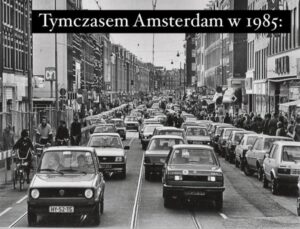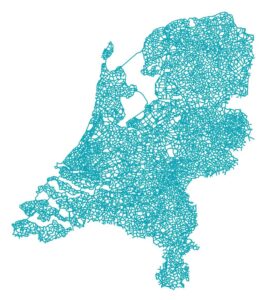 I was at a loss for what to do with myself, following the fall of democracy on November 5.
I was at a loss for what to do with myself, following the fall of democracy on November 5.
Normally I would fight and wait for an opportunity. But with my 70th birthday coming in January, I no longer have the time.
My solution has been to retire from daily reporting, except for this blog and Substack, and to invest my savings in seeking solutions to the Looming Crisis, the destruction of the planet by fossil fuels.
Some of those solutions are found in the Netherlands.
Why the Netherlands?
 The Netherlands should not exist. Without enormous amounts of cooperation, across several centuries, the North Sea would have consumed it by now.
The Netherlands should not exist. Without enormous amounts of cooperation, across several centuries, the North Sea would have consumed it by now.
Instead, they found ways to cooperate and make do.
My weak knowledge of Dutch history was enriched by an American book, “The Island at the Center of the World.” It not only details the untold story of New Netherland, which became New York in 1666, but explains the peculiarities of that era and the heritage it left America.
Cooperation, tolerance, and innovation were essential to the survival and greatness of the Netherlands. The colony became North America’s first multi-ethnic enclave, with a rough democracy modeled on the homeland. During the 17th century the Dutch also created double-entry bookkeeping and the insurance industry. The Dutch Stadtholder William of Orange even ended the English Stuart dynasty in the “Glorious Revolution” of 1688, leading directly to the modern era of parliamentary supremacy. England didn’t conquer New Netherland. The two amalgamated.
What’s most amazing is that during this period the Netherlands was technically a property of the Hapsburgs, specifically the Spanish branch. Somehow even this didn’t stop them from their Golden Age, any more than occupation by Nazi Germany stopped them in World War II.
An example worth following in many ways.
The Dutch Climate Solution

This was not inevitable. Amsterdam in the mid-1980s was as clogged with cars as New York is now. The country just realized that cars don’t scale, and that their country was flat. E-bikes, I should add, can make American cities flat.
This was supplemented by an extensive rail network. While America’s railroads are designed for freight, those of Europe are designed for people. This lets inter-city transport scale and. When combined with bike priority and urban trollies, it means you don’t need a car.
I’m off next year to see the result. I’m not going as a tourist. I want to embed into the place and meet some people. I will be centered near Utrecht, home of the world’s largest bicycle garage. I’ll use trains and rental bikes to see how things work, I hope to share those insights here, not just as text but as videos and in as many other ways as I can manage.
Learning new stuff is the best way to start retirement.










